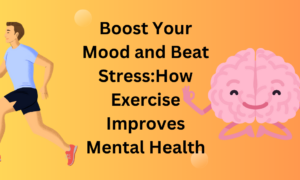Asthma, a condition that affects millions of people worldwide, can be both frustrating and debilitating. The wheezing, coughing, and shortness of breath that accompany an asthma attack can make even the simplest tasks seem impossible. But what if there was a way to help manage these symptoms? What if exercise could be the key to unlocking a world of relief for asthma sufferers?
In this blog post, we will explore the fascinating connection between exercise and asthma management. We’ll delve into the science behind how physical activity can positively impact your respiratory system and discuss the types of exercises that are safe and effective for those with asthma. Get ready to discover firsthand accounts from real individuals who have experienced life-changing improvements through regular exercise.
So grab your sneakers, take a deep breath (literally!), and join us on this journey as we unravel the question: Can exercise help asthma? Let’s dive in!
The Role of Exercise in Managing Asthma Symptoms
Asthma can be a debilitating condition, causing difficulty in breathing and impacting the overall quality of life. However, exercise has been found to play a crucial role in managing asthma symptoms and improving lung function.
Regular physical activity helps strengthen the respiratory muscles, making it easier for individuals with asthma to breathe. It also improves cardiovascular health, which is important for those with asthma as they may be at higher risk for heart disease.
When it comes to choosing exercises for asthma patients, low-impact activities are often recommended. These include walking, swimming, cycling, and yoga. These exercises help improve lung capacity while minimizing the risk of triggering an asthma attack.
The benefits of regular exercise for asthma patients go beyond just improved lung function. Exercise also helps reduce inflammation in the airways and boosts the immune system’s response. This can lead to fewer symptoms and less reliance on medication.
It’s important to take certain precautions when exercising with asthma. Always warm up before starting any physical activity and listen to your body’s cues during exercise. Avoid exercising outdoors on cold or polluted days that may trigger an attack.
Real people have experienced remarkable improvements in their asthmatic conditions through regular exercise routines. From being able to participate in sports they love without fear of an attack to reducing their dependence on medication – these success stories inspire others living with asthma.
While exercise is undoubtedly beneficial for managing asthma symptoms, it should not be seen as a standalone treatment option. Other lifestyle changes such as maintaining a healthy diet, avoiding triggers like smoke or allergens, and taking prescribed medications consistently are equally important components of managing this chronic condition effectively.
In conclusion (as per instructions), incorporating regular exercise into your routine can greatly benefit those suffering from asthma by improving lung function, reducing inflammation in the airways,and boosting overall immunity. So lace up those sneakers or roll out that yoga mat – let fitness become your ally in fighting against this challenging condition!
Types of Exercises for Asthma Patients
When it comes to managing asthma through exercise, finding the right types of activities is key. While any form of physical activity can be beneficial, certain exercises are particularly suited for individuals with asthma.
1. Aerobic Exercises:
Aerobic exercises are great for improving cardiovascular fitness and lung capacity. These include activities like brisk walking, swimming, cycling, and dancing. They help strengthen the respiratory muscles and improve overall lung function.
2. Yoga and Pilates:
Yoga and Pilates focus on controlled breathing techniques and gentle movements that can be especially helpful for asthma patients. These low-impact exercises promote relaxation, reduce stress levels, and enhance breath control.
3. Strength Training:
Strength training exercises involve using weights or resistance bands to build muscle strength. Engaging in regular strength training helps develop stronger respiratory muscles, making breathing easier during physical exertion.
4. Tai Chi:
Tai Chi is a gentle martial art that combines slow movements with deep breathing techniques. This ancient practice improves balance, flexibility, and relaxation while enhancing lung capacity.
5. Interval Training:
Interval training involves alternating between high-intensity bursts of exercise followed by periods of rest or lower-intensity activity. This type of workout can be customized to an individual’s abilities and provides cardiovascular benefits without prolonged exposure to triggers such as cold air or allergens.
Remember to consult with your healthcare provider before starting any new exercise routine if you have asthma.
Benefits of Regular Exercise for Asthma Patients
Regular exercise can offer numerous benefits for asthma patients. One of the key advantages is improved lung function. When you engage in physical activity, your breathing rate increases, which helps to strengthen and expand your lungs. Over time, this can lead to increased lung capacity and better overall respiratory health.
Exercise also plays a crucial role in managing weight and maintaining a healthy body mass index (BMI). Excess weight can put additional strain on the respiratory system, making it harder for asthma sufferers to breathe. By engaging in regular physical activity, individuals with asthma can reduce their risk of obesity and improve their ability to control symptoms.
Furthermore, exercise has been shown to enhance immune function. A strong immune system is essential for fighting off infections or allergens that may trigger asthma attacks. By staying active, asthmatics may experience fewer respiratory infections and have a reduced likelihood of exacerbations.
In addition to these physiological benefits, regular exercise also provides psychological advantages for asthma patients. Physical activity has been proven to reduce stress levels and improve mental well-being. Dealing with chronic conditions like asthma can be challenging both physically and emotionally; therefore, incorporating exercise into one’s routine can provide a much-needed release and boost mood.
It’s worth noting that individual preferences play an important role when choosing the right type of exercise for someone with asthma. While some individuals may find relief through activities like swimming or cycling due to the warm air environment they create, others may prefer low-impact exercises such as walking or yoga.
Regular exercise holds immense potential for improving the quality of life for those living with asthma by enhancing lung function, managing weight, boosting immunity,and promoting emotional well-being
Precautions to Take When Exercising with Asthma
When it comes to exercising with asthma, taking certain precautions can help ensure a safe and enjoyable workout. Here are some essential tips to keep in mind:
1. Consult your doctor: Before starting any exercise program, it’s crucial to consult with your healthcare provider. They can provide personalized guidance and recommendations based on the severity of your asthma.
2. Warm up properly: Engaging in a thorough warm-up before exercising is vital for individuals with asthma. This helps prepare the body for physical activity and reduces the likelihood of triggering an asthma attack.
3. Choose suitable activities: Opt for exercises that are less likely to trigger symptoms, such as swimming, walking, or cycling. These low-impact activities put less strain on the lungs and are generally better tolerated by asthmatics.
4. Monitor environmental conditions: Pay attention to air quality and weather conditions before heading out for exercise. Cold air, humidity, or high levels of pollution may worsen asthma symptoms.
5. Use medication as prescribed: If you use inhalers or other medications to manage your asthma, make sure to take them as prescribed by your doctor – both before and after exercise if necessary.
6. Pace yourself: Don’t overexert yourself; listen to your body’s signals and adjust intensity accordingly during workouts.
7 Stay hydrated: Proper hydration is essential for everyone but especially important for those with respiratory conditions like asthma.
By following these precautions when exercising with asthma, you can enjoy the benefits of physical activity while minimizing the risk of triggering symptoms or an exacerbation.
Success Stories: Real People Who Have Improved Their Asthma through Exercise
Meet Sarah, a 35-year-old woman who has struggled with asthma since childhood. For years, she relied on medication to manage her symptoms and often felt limited in her physical activities. However, everything changed when she decided to incorporate regular exercise into her routine.
Sarah started slowly with gentle exercises like walking and yoga. As she gradually increased the intensity of her workouts, she noticed that her breathing became easier and more controlled. Over time, Sarah’s lung capacity improved significantly, allowing her to engage in higher-intensity activities like running and weightlifting.
Another inspiring story is that of Michael, a young athlete who was diagnosed with asthma at the age of 12. Despite facing setbacks in his sports career due to frequent asthma attacks, he refused to let it hold him back. With the guidance of his healthcare provider, he developed an exercise plan tailored specifically for his condition.
By following this plan diligently and using proper breathing techniques during workouts, Michael was able to participate fully in competitive sports without compromising his health. His determination paid off as he not only managed his asthma effectively but also achieved remarkable success in his athletic pursuits.
These are just two examples among many individuals who have experienced significant improvements in their asthma symptoms through regular exercise. It is important to note that everyone’s journey is unique and what works for one person may not work for another.
If you have been diagnosed with asthma or suspect you may be experiencing related symptoms, consult your healthcare provider before starting any exercise program. They can guide you on suitable exercises based on your specific needs and help monitor your progress along the way.
Remember that consistency is key when it comes to reaping the benefits of exercise for managing asthma symptoms. Start slowly and gradually increase intensity as tolerated while always listening to your body’s cues.
In addition to improving lung function and reducing inflammation, regular physical activity can also enhance overall fitness levels, boost mood, and reduce stress – all of which can contribute to better asthma
Additional Lifestyle Changes to Help Manage Asthma
When it comes to managing asthma, making a few lifestyle changes can go a long way in improving your overall health and reducing symptoms. Here are some simple yet effective changes you can incorporate into your daily routine:
1. Maintain a clean living environment: Dust mites, pet dander, and mold are common triggers for asthma symptoms. Regularly vacuuming carpets, washing bedding in hot water, and keeping humidity levels low can help reduce exposure to these allergens.
2. Avoid smoking and secondhand smoke: Smoking is harmful for everyone, but especially for those with asthma. Quitting smoking or avoiding secondhand smoke altogether will significantly improve your lung function and decrease the frequency of asthma attacks.
3. Follow a healthy diet: A balanced diet rich in fruits, vegetables, whole grains, and lean proteins not only supports overall health but also helps manage asthma symptoms. Certain nutrients like vitamin C and omega-3 fatty acids have been found to have anti-inflammatory properties that may benefit individuals with asthma.
4. Stay active: In addition to regular exercise specifically targeted towards managing asthma (as discussed earlier), staying physically active throughout the day is important for maintaining good respiratory health. Incorporate activities like walking or cycling into your daily routine whenever possible.
5. Manage stress levels: Stress has been known to trigger or worsen asthma symptoms in some individuals. Finding healthy ways to cope with stress such as practicing relaxation techniques or engaging in hobbies you enjoy can have a positive impact on both your mental well-being and your respiratory health.
Remember that while these lifestyle changes may be beneficial for most people with asthma, it’s essential to consult with your healthcare provider before implementing any new strategies into your routine.
Conclusion
Regular exercise can indeed help manage asthma symptoms and improve overall lung health. By engaging in appropriate types of exercises, individuals with asthma can experience numerous benefits such as improved breathing capacity, reduced inflammation, increased endurance, and better control over their condition.
It is important to remember that every person’s experience with asthma may vary, so it’s essential to consult with a healthcare professional before starting any exercise regimen. They can provide personalized recommendations based on individual circumstances and ensure safety throughout the process.
In addition to exercise, adopting lifestyle changes like maintaining a healthy diet, managing stress levels effectively, avoiding triggers, and staying consistent with medications are crucial for managing asthma successfully.
By incorporating exercise into your daily routine and making necessary lifestyle adjustments, you too can join the ranks of those who have experienced positive outcomes in managing their asthma through physical activity. Remember to start slowly and gradually increase intensity while listening to your body’s cues.
So why wait? Take charge of your asthma management today by embracing the power of exercise – it might just be the key to unlocking a healthier life!



























